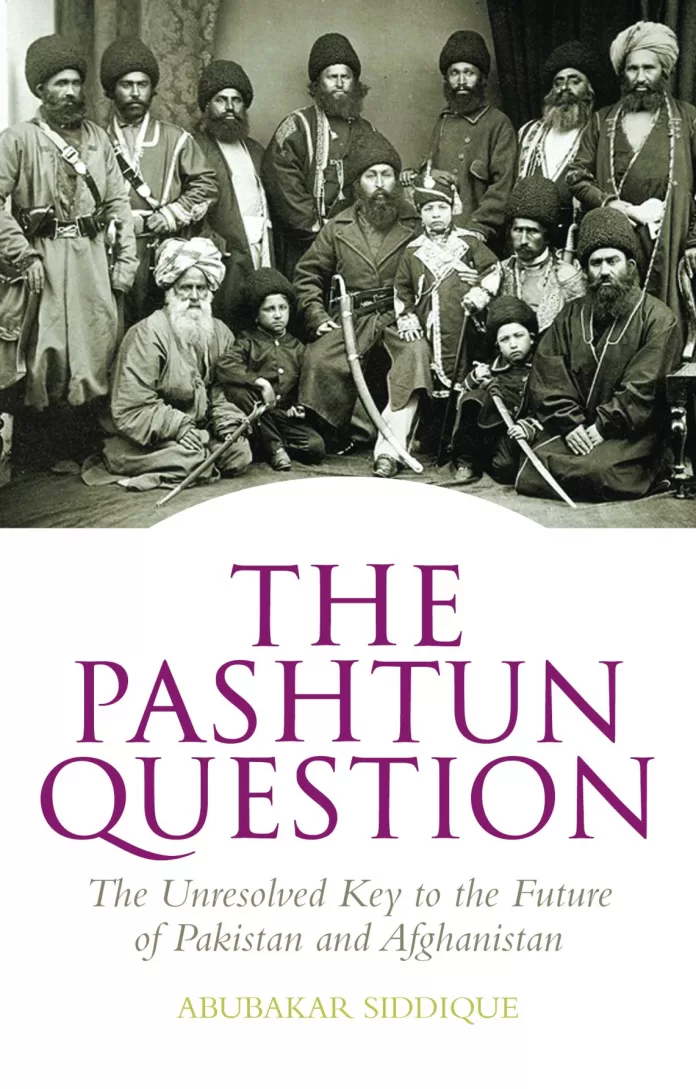The Pashtun Question is a timely arrival in view of the winding down of U.S. and NATO mission in Afghanistan. Abubakar Siddique is well qualified to tackle the Pashtun question. He is a Pashtun from the tribal territory of South Waziristan and spent his early childhood there. He is an anthropologist by training and in his career as a journalist he covered Pakistan’s tribal areas as well as Afghanistan. He spent lot of time in the field and is familiar with major actors in Pashtun lands on both sides of the Durand Line, the boundary separating Pakistan and Afghanistan.
This book is a good resource for general readers as it provides the background of the genesis of conflict on both sides of the Durand Line with detailed analysis of the civil war in Afghanistan. For experts, it condenses the thirty year long civil war in less than three hundred pages. The book also provides details of the rise of extremism in the region that is now plaguing a large swath of territory and impeding the political and economic progress both in Afghanistan and Pakistan.
The book’s format is in chronological order of events that provides a very readable historical narrative. Abubakar provides some details about the conflict in Waziristan based on his own and other available resources. This segment could have been expanded especially the process of dismantling of tribal structure in a very short period of time. Physical elimination and flight of traditional tribal elders, destruction of traditional instruments of stability in a tribal society and entrenchment of extremist elements in tribal lands needs further exploration. However, coverage of this subject is extremely dangerous and it is very difficult to engage people in serious discussion, even those who have fled their lands in the tribal territory to cities (this is based on my own visits to the region and interactions with Pashtuns from diverse backgrounds). Many tribal leaders have been assassinated even in major cities of Peshawar, Rawalpindi and Karachi. I was reminded of this fact when a few years ago I was reviewing some old colonial era files at Peshawar archives. I was going through the file of a tribal elder of Mohmand tribe spanning his life in first half of twentieth century. One of the officers working in the archives was also from Mohmand tribal agency and he told me that the son of this tribal elder fled to Peshawar after militants took control of the area. He was shot dead near his house in Peshawar.
In writing about an ethnic group, the narratives of a native and outsider provide unique perspectives. An outsider can be more objective in his analysis of the group as he is not part of the intra-group rivalries. However, he can easily miss the insight of the group due to language and cultural barriers. This is the case in most of the work done about Pashtuns in English language by British military and civil administrators. A native can bring the insight in view of being a member of the group but he can also downplay the inherent weaknesses of the group and tend to blame everything bad to outside forces. There is very limited scholarly material published by Pashtun authors. Abubakar’s work is a welcome addition and being a Pashtun, he is able to bring mirror in the room to highlight the weaknesses of Pashtun society. He skillfully analyzes how Pashtun groups in Afghanistan and Pakistan used outside sources for power struggles in their lands. Armed conflict is a painful event but it has its own rules. No matter what outside forces want, it was Pashtun who happily blew up electricity pylon on Jalalabad-Kabul highway for a handout of $100 in 1980s and 1990s and today ideological indoctrination from an extremist Arab and hand outs from a rich Arab living in luxury in his own country, he is beheading his own people and blowing up schools. He is responsible for his acts and must be held accountable for destroying the present and future of his own people.
The author argues that the rise of extremism and violence in Pashtun lands is due to failure of nation states of Afghanistan and Pakistan. This is not unique to Pashtun areas and violence emerges from some kind of failure of the state and society. This rule is equally applicable to the carnage of the two World Wars where belligerents were developed countries as well as violence in failing states of Africa. The Pashtuns have also been beneficiaries where they ruled Afghanistan as royalists, communists and Islamists and in the case of Pakistan were able to get more than a fair share in civil and military bureaucracies as well as in the economic sphere. The author addresses the important question of how to extricate the Pashtun society in Afghanistan and Pakistan from the violent cycles by resolving existing border disagreements, adhering to principle of non-interference and political and economic progress of both countries.
The Pashtun Question is a must read for those engaged in Afghanistan and Pakistan but more importantly, it should be read by Pakistanis and Afghanis, especially Pashtuns. This will help jump start a discussion among Pashtuns about their future. The author should seriously consider translation of the book in Urdu and Pashtu to make it available to a wider audience of the region.





